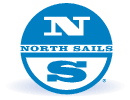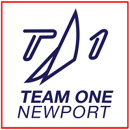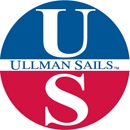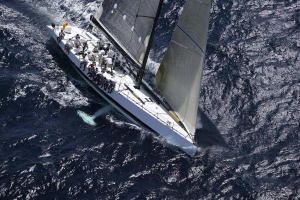

















|
|
|
Scuttlebutt News Center:Patent Law and CBTF™
(May 24, 2005) Avid Scuttlebutt readers will note the utilization of canting ballast technology in many of the newly designed grand prix yachts getting splashed these days. The sight of the bulb package cranked to windward below the ankles of hiking crew is a dead giveaway of the latest thinking that is being incorporated in these boats. However, to join the latest trend, each boat has had to acquire a license to use the Canting Ballast Twin Foil™ (CBTF™) technology from the patent holders, US-based CBTF Co., formerly known as DynaYacht. Two separate patents govern CBTF™, which cover the use of a laterally, swingable ballast carried on a strut. Since the strut provides no lift or leeway control, fore and aft rotating underwater foils provide the needed directional and leeway control. Development of the technology purportedly cost millions of dollars, which is where the license fee comes in. So if you want a boat that has a swinging ballast strut with fore and aft rotating blades, you are going to need a license. Who says? The latest skirmish involves Maximus, the 100-foot yacht designed by Greg Elliot and Clay Oliver, built by Cookson's boat yard in New Zealand, and owned by Bill Buckley and Charles Brown. No license was retained for Maximus, and while initial photos of the boat do not reveal the patent infringement, CBTF Co. claims that what now exists under the water is in violation of their patent. Not surprisingly, the owners of Maximus disagree. The long arm of the United States Patent and Trademark Office does a good job of governing what occurs within the US, but has a tougher task of dealing with violations abroad. Depending upon the reciprocity agreements between countries, a US patent holder may either successfully defend its patent, or helplessly watch it copied without repercussion. The uprising between Maximus and CBTF Co. reached new highs prior to the start of the Rolex Transatlantic Race, wherein Maximus was in the US conducting what CBTF Co. asserts were business-related events, a violation of the patent law which has more teeth to it than other protections. So what will it take for CBTF Co. to extend its blessing on Maximus? The receipt of the license fee, which has risen from the scheduled amount of $87,500 to now $100,000.00. Plus, don’t count on CBTF Co. quietly walking away from this conflict. Their ability to defend CBTF™ in this instance may very well dictate how they continue doing business in the future. Patent Links |
||


